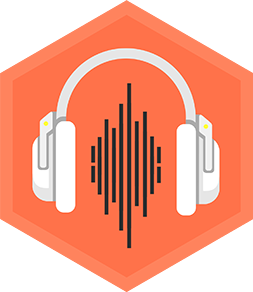Create Your Own Beatbox Fill
Compose and practice a short beatbox fill using mouth percussion, breath control, rhythm patterns, and simple layering; record and refine your performance safely.



Step-by-step guide to Create Your Own Beatbox Fill
Step 1
Find a quiet room and sit up straight so you can hear yourself clearly.
Step 2
Take three slow sips of water to moisten your throat and prepare your voice.
Step 3
Look in the mirror and practice three mouth percussion sounds like a deep "B" (kick) a sharp "Pf" (snare) and a crisp "Tss" (hi-hat).
Step 4
Do a breath-control warm-up by inhaling through your nose for two counts and exhaling making a steady "shh" for four counts three times.
Step 5
Open your notebook and write a simple 4-beat pattern using one letter for each sound (for example B T B T).
Step 6
Tap the 4-beat pattern slowly on your leg while counting out loud to keep a steady tempo.
Step 7
Replace the taps with the mouth sounds from the mirror practice and perform the pattern slowly three times.
Step 8
Create a short 2-beat fill for the end of the pattern by picking two sounds and practice that fill five times.
Step 9
Hum a simple melody softly over the pattern to add a layer and practice keeping your breathing steady for two runs.
Step 10
Make one safety check that you are not straining and then record one full performance of the pattern plus the fill.
Step 11
Listen to your recording once and notice one thing you want to change like timing volume or clarity.
Step 12
Write that one improvement in your notebook so you remember what to work on.
Step 13
Practice only that improvement for three focused runs to make it better.
Step 14
Record a final take of your beatbox fill after practicing the improvement.
Step 15
Share your finished beatbox fill on DIY.org.
Final steps
You're almost there! Complete all the steps, bring your creation to life, post it, and conquer the challenge!


Help!?
What can we use instead of a mirror, notebook, or a recorder if we don't have them?
Use your phone's front camera as a mirror, a notes app instead of a paper notebook, and the phone's voice memo or camera to record the performance, and if you can't post to DIY.org share the final take privately with family or a teacher.
What should we do if the mouth sounds are unclear or timing feels off during practice?
Slow the tempo, keep tapping the 4-beat pattern on your leg while counting out loud to steady timing, take extra sips of water before practicing the B/Pf/Tss sounds, and close doors or move to a quieter room so you can hear yourself clearly when recording.
How can this activity be changed for younger children or older kids?
For younger kids, simplify step 3 by using just two easy sounds and replace step 6's leg taps with claps or pats, while older kids can expand step 9 by humming a more complex melody, adding fills in step 8, or layering tracks with an app.
How can we extend or personalize the beatbox fill after completing the final take?
After step 14, edit your final take in a free audio app to add a subtle beat loop, reverb, or a second vocal harmony, or collaborate with a friend to record an additional layer before sharing on DIY.org.
Watch videos on how to Create Your Own Beatbox Fill
Beatboxing 101 - Basic Fills | DIY.org
Facts about beatboxing and vocal percussion
🗣️ Beatboxing rose to fame in 1980s hip-hop — pioneers like Doug E. Fresh helped popularize mouth percussion as an art form.
🌬️ Diaphragmatic (deep) breathing gives beatboxers better breath control and helps protect the throat during long phrases.
🎧 Loop pedals let you record a short pattern and overdub layers, so one person can create the sound of an entire band.
🥁 Many pop songs sit between 90–140 BPM, a comfy tempo range for composing short, catchy beatbox fills.
🔁 Skilled beatboxers use inward sounds to inhale while still making noise, enabling continuous rhythms without obvious gaps.
How do you create a beatbox fill with a child?
What materials do I need to make a beatbox fill at home?
What ages is the beatbox fill activity suitable for?
What are the benefits of learning to compose a beatbox fill?


One subscription, many ways to play and learn.
Only $6.99 after trial. No credit card required



![FL Studio 11 - How to Make a Beat [Beat Making Tutorial]](https://img.youtube.com/vi/x4XkQtpyWxM/mqdefault.jpg)